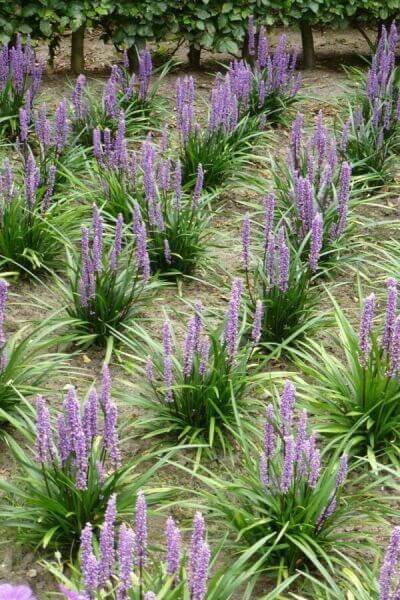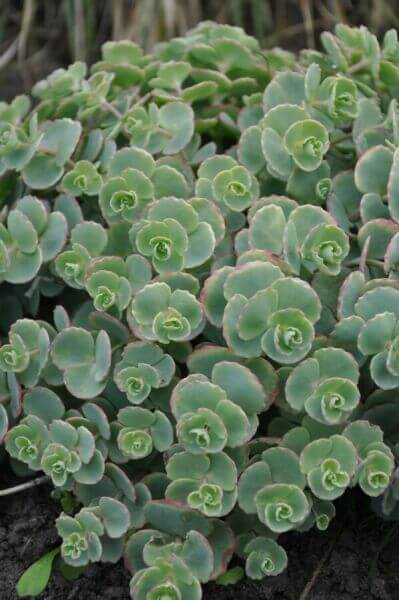Hedge Plants For Wildlife Corridors
Hedge Plants For Wildlife Corridors
Blog Article
Hedging Plants For Large Gardens
Improve your garden's appeal with rich hedge varieties such as Yew (Taxus), Thuja, Laurel, Photinia, and Bamboo, celebrated for their structural stability and ecological benefits.
Yew and Thuja provide evergreen protection and winter strength, while Laurel offers fast development and broad, fragrant leaves.
Photinia adds seasonal beauty with its vibrant red foliage, and Bamboo lends a low-maintenance, tranquil atmosphere.
These hedges enhance air quality, minimize sound, and produce tranquil, personal areas.
Proper planting, spacing, and upkeep make sure vigorous growth and eco-friendly harmony.
Explore how these lavish ranges can elevate your garden's beauty and wellness.
Secret Takeaways
Change Your Garden With Lush Hedge Ranges
- Select Yew for its thick, evergreen development and exceptional longevity.
- Select Laurel for its fast growth and broad leaves, making sure fast privacy.
- Choose Photinia for its vibrant seasonal foliage, which turns a striking dark red.
- Use Bamboo for a low-maintenance, winter-hardy hedge with visual appeal.
- Area plants 2-3 per meter and prune frequently for optimal growth and health.
Popular Hedge Plants
When transforming a garden with lush hedge varieties, it's necessary to consider popular hedge plants such as Yew, Thuja, Laurel, and Photinia due to their distinct characteristics and benefits.
Yew (Taxus) is highly esteemed for its longevity and thick, green growth, making it a prime choice for enduring landscapes.
Thuja is noted for its evergreen foliage and robust winter strength.
Photinia adds seasonal vibrancy with red leaves that darken gradually, developing vibrant visual appeal.
Laurel uses quick development and aromatic, broad leaves, suitable for quick personal privacy.
Furthermore, Bamboo is an exceptional option for atmosphere, providing a low-maintenance, winter-hardy choice that enhances the garden's aesthetic with its classy, swaying canes.
These selections deal with a range of horticultural requirements and choices.
Advantages of Garden Hedges
Garden hedges provide a wide range of benefits, making them an important addition to any landscape. These natural barriers are economical to execute and provide substantial wind security, enhancing air blood circulation and adding to noise decrease. The dense foliage of hedges like Thuja and Beech ensures personal privacy by obstructing presence, producing a secluded and tranquil environment.
Hedges likewise play a crucial function in microclimate regulation, supplying a stable environment that cultivates plant growth and minimizes temperature fluctuations. Their complex leaf structures filter pollutants, enhancing air quality and contributing to a healthier garden environment.
Furthermore, hedges stand out in noise decrease, absorbing and deflecting sound waves to lower ambient sound levels. This dual performance of providing both acoustic and visual personal privacy enhances the total tranquility and aesthetic appeal of any garden.
Planting and Upkeep Tips
For an effective hedge, precise preparation of the planting location is crucial. Guarantee the soil has correct pH and drainage to support strong root development.
Area the plants properly for the selected types. Water the hedge frequently during its preliminary growth phase, changing as required with seasonal changes.
Execute a organized pest control and disease prevention technique, utilizing chemical or organic treatments when needed. Frequently check for aphids, mites, and fungal infections.
Apply mulch to keep wetness and reduce weeds. Seasonal pruning promotes thick development and air circulation, important for plant health.
Following these standards will assist you cultivate a lively, well-maintained hedge that enhances the charm of your garden.
Spacing and Cutting Standards
Spacing and Cutting Standards
Correct spacing and cutting are crucial for cultivating healthy, visually appealing hedges. Adequate spacing ensures each plant receives sufficient nutrients, light, and air flow.
Follow these standards for optimum hedge upkeep:
- Spacing: Position hedge plants 2-3 plants per meter to motivate robust development.
- Pruning Strategies: Routine pruning is vital for preserving preferred hedge height and shape. Trim new growth in summer season and cut down older wood throughout winter season.
- Seasonal Care: Adjust trimming schedules and methods according to seasonal requirements to make sure plant health.
- Hedge Height: Frequently screen and trim to preserve the preferred hedge height and achieve uniform aesthetics.
Following these steps will guarantee your hedge prospers, improving both the appeal and functionality of your garden.
Picking the Right Hedge
Selecting the Right Hedge
Selecting the appropriate hedge includes assessing factors such as fully grown height, foliage density, and ecological resilience. Effective hedge plant choice requires comprehending each species' development qualities and site-specific adaptability.
For instance, Yew (Taxus) provides exceptional durability and dense development, while Thuja is notable for its winter season resilience. In addition, considering upkeep requirements is essential; fast-growing types like Laurel or Privet demand routine trimming, whereas low-maintenance choices like Bamboo or Ivy might be more effective for those seeking minimal upkeep.
Environmental factors such as soil type, light schedule, and wetness conditions ought to also assist the selection process. This mindful method ensures the picked hedges will flourish, supplying both aesthetic and practical advantages to the garden landscape.
Shipment and Planting Guidance
To guarantee your hedge plants thrive, they must be provided by specialized couriers and planted immediately upon arrival.
Follow these essential steps for effective planting:
- Soil Preparation: Improve the soil with raw material to improve drain and nutrient material.
- Planting Depth: Develop a trench twice the width and equal to the depth of the root ball.
- Watering Methods: Water completely after planting, keeping the soil regularly wet but not saturated.
- Mulching: Apply a layer of mulch to keep wetness and reduce weeds.
Consumer Support and Service
Given the essential role of prompt help in horticultural pursuits, our consumer support team is available six days a week through telephone, email, and social media to offer professional recommendations and quickly attend to any issues. Their commitment to fast reaction times guarantees client fulfillment by resolving inquiries connected to plant health, ideal planting approaches, and maintenance schedules.

----------------------
This thorough assistance system, strengthened by a stellar 9.3/ 10 consumer score, highlights our commitment to boosting the gardening experience for each customer.
Often Asked Concerns
For How Long Does It Take for Hedge Plants to Develop?
Hedge plants typically need one to three years to end up being completely developed, with the exact period varying by types and growing conditions.
Effective care during this important period is vital for robust growth. Consistent watering, alert weed control, and appropriate fertilizer application are critical in promoting strong root advancement.
For example, fast-growing types like Laurel might develop faster, while slower-growing varieties such as Yew might take longer. Thorough maintenance accelerates the facility procedure, leading to dense and healthy hedges.
What Are the Best Hedge Plants for Personal Privacy?
The concern of the very best hedge plants for privacy includes evaluating evergreen and deciduous options.
Evergreen hedges like Thuja, Laurel, and Cypress offer year-round protection, ensuring continuous privacy.
On the other hand, deciduous hedges such as Beech offer seasonal privacy, shedding leaves in chillier months.
Secret upkeep pointers for personal privacy hedges consist of routine cutting, fertilizing in spring, and proper spacing-- generally 2 to 3 plants per meter.
Furthermore, constant watering and thorough weed elimination are crucial for promoting healthy, dense growth.
Can Hedge Plants Draw In Wildlife to My Garden?
Yes, hedge plants can draw in wildlife to your garden by offering vital advantages like shelter, food, and nesting sites, thus improving local biodiversity. For example, yew, holly, and laurel are excellent for attracting birds, while ivy supports a variety of pests.
Nevertheless, it is necessary to keep in mind that there are some disadvantages, such as increased maintenance to handle bugs and regular upkeep. Carefully picking and maintaining hedge varieties can help balance these drawbacks and advantages, eventually cultivating a dynamic and sustainable community in your garden.
Exist Any Flowering Hedge Plants Available?
Yes, there are flowering hedge plants offered that can improve the beauty of your garden.
For instance, Elaeagnus, likewise known as Olive Willow, produces aromatic white flowers in the fall, adding a touch of beauty.
Photinia, another popular option, showcases lively red leaves that mature into a rich green, developing a vibrant visual effect throughout the seasons.
To guarantee these plants prosper, it's vital to practice proper pruning methods and seasonal upkeep, such as cutting brand-new development in the summer season and cutting back in the winter.
These measures will help preserve the health and visual appeal of your blooming hedges.
How Do I Avoid Bugs in My Hedge Plants?
To avoid bugs in hedge plants, use natural bug control approaches and keep correct hedge care. Present beneficial insects like ladybugs, which prey on harmful pests, to develop a balanced ecosystem.
Regularly inspect your hedges for indications of problem and promptly remove any afflicted parts to avoid the spread. Make sure the health of your hedges by using balanced fertilizers and providing adequate water.
Utilize mulching to maintain soil wetness and appropriate spacing to decrease plant stress and promote robust growth. These practices jointly assist in reducing pest issues and keeping a healthy hedge.
Conclusion
In essence, selecting the Browse this site best hedge varieties such as Yew, Thuja, and Laurel can change any garden into a relaxing haven. These plants supply year-round plant, improve aesthetic appeal, and deal practical advantages like sound reduction and wind defense.
Appropriate planting techniques, precise spacing, constant watering, and seasonal trimming are essential for ideal growth.
Reliable shipment services and expert consumer support ensure a smooth experience from purchase to planting, making it simpler than ever to raise your outdoor area.
Garden hedges offer a plethora of benefits, making them an important addition to any landscape. These natural barriers are affordable to carry out and offer substantial wind security, boosting air flow and contributing to noise reduction. The dense foliage of hedges like Thuja and Beech guarantees personal privacy by obstructing presence, creating a secluded and tranquil environment.

Pruning Strategies: Routine pruning is vital for maintaining wanted hedge height and shape. Cut new development in summertime and cut back older wood during winter season.
Report this page